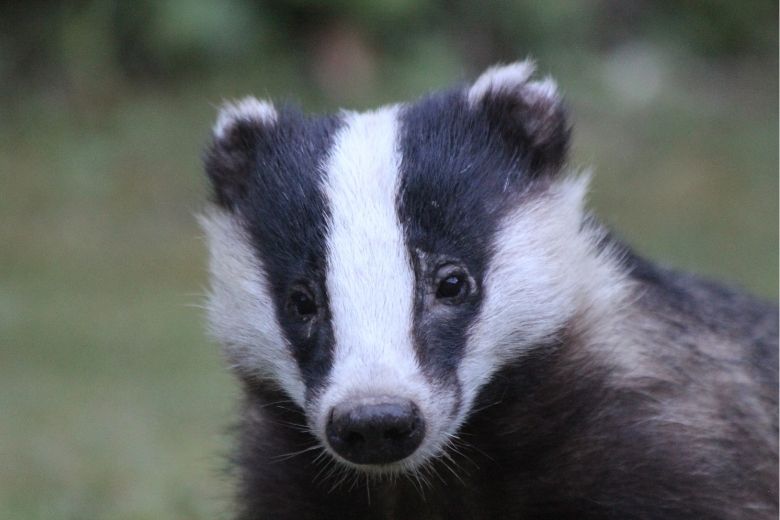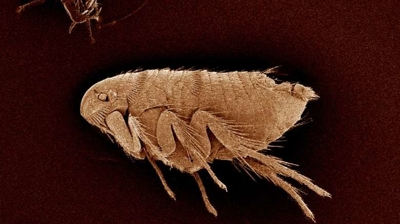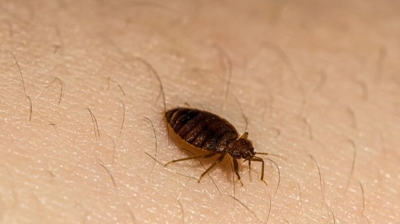
Badger Control Services

Badgers
Badgers, while fascinating and ecologically important animals, can cause a variety of problems. Here are some of the ways they may be considered harmful:
- Structural and Property Damage: Badgers create large burrow systems (setts) that can weaken the foundations of buildings, fences, roads, and irrigation systems. Burrows and holes in fields can damage farm equipment or create hazards for livestock, which may trip or break legs.
- Threats to Other Wildlife: Badgers sometimes prey on ground-nesting birds, small mammals, reptiles, and amphibians, potentially reducing local biodiversity.
- Disease Transmission: In some areas, badgers are known carriers of bTB, which can spread to cattle, creating significant financial losses for farmers. They may also harbor fleas, ticks, and other parasites that can affect pets, livestock, or even humans.
- Human and Pet Conflicts: While not usually aggressive, a cornered badger can be fierce and inflict serious injuries to pets such as dogs. In suburban areas, badgers may raid garbage bins, creating mess and attracting further pests.
So, while badgers play an important ecological role—helping with soil aeration and natural pest control—their destructive digging habits, potential for spreading disease, and conflicts with human activities can make them harmful in both rural and urban settings.
What Do Badgers Look Like? || What Do Badgers Eat? || Do Badgers Bite? || Badger Damage
Badger Removal
Badgers, while generally not aggressive toward humans, can pose significant problems when they enter or settle on residential or commercial properties. Their presence can lead to structural, health, and safety issues that make professional removal important. Here are some of the reasons:
- Property Damage: Badgers are burrowing animals. They dig extensive setts (dens) underground, which can undermine foundations, damage driveways, patios, and landscaping, and even compromise the structural integrity of buildings. They can also tear up lawns and gardens in search of food, leaving costly repairs in their wake.
- Disease Risk: Badgers can carry diseases that may affect humans, pets, and livestock. For example, they can be carriers of bovine tuberculosis (bTB) and parasites such as fleas, ticks, and mites. Contamination from their droppings and urine can also pose a risk of bacterial or parasitic infections.
- Food Contamination and Infestation: Badgers are opportunistic feeders. If they access garbage, compost, or stored food, they can contaminate it, attracting other pests such as rats, mice, and insects. This can escalate into a broader infestation problem.
- Safety Hazards: While badgers generally avoid confrontation, they can be dangerous if cornered or threatened. Their powerful claws and teeth can inflict serious injuries. Burrows near pathways or buildings can also cause tripping hazards or accidental injuries.
- Legal and Environmental Considerations: In some regions, badgers are a protected species, which means there are strict regulations about how and when they can be removed. Attempting DIY removal without proper knowledge can lead to legal trouble or unintentional harm to the animal. Our professional wildlife control ensures humane, legal, and effective removal while minimizing environmental impact.
- Preventing Recurrence: Simply chasing a badger away often isn’t enough. Without professional intervention, they may return, or new badgers may move in. Our experts can identify attractants, seal entry points, and implement deterrents to prevent future problems.
Removing badgers from your home or business isn’t just about avoiding nuisance behavior—it’s about protecting property, health, and safety, while ensuring compliance with wildlife laws.
Learn more: How To Get Rid Of Badgers
Badger Control
Hiring our professional pest control for badgers is often the safest, most effective, and legally sound solution. While badgers may appear harmless or even beneficial in the wild, they can cause major problems when they move onto private property. Here are some of the reasons to consider our professional help:
- Badgers are protected by law in many regions, which means it is illegal to trap, harm, or kill them without the proper licenses or methods. Attempting DIY control can easily put you at risk of fines or legal trouble. Our licensed professionals understand local wildlife regulations and use only approved, humane methods.
- Badgers are strong, aggressive, and potentially dangerous when threatened. They have powerful jaws and claws, and confronting one directly can result in serious injury. Our professionals have the training and equipment needed to handle them safely, minimizing risk to people and pets.
- Badgers can cause extensive property damage. Their burrowing habits undermine foundations, dig up lawns, damage crops, and create hazards for livestock. Our professionals not only remove or deter the badgers but also implement preventive measures to stop them from returning, such as exclusion barriers, habitat modification, or deterrent treatments.
- Our professional pest control provides a comprehensive solution. While DIY methods like repellents, fencing, or filling burrows may offer short-term relief, they are often ineffective against determined badgers. Our experts design a tailored plan that addresses both the current problem and long-term prevention.
Hiring our professionals gives you peace of mind. You can be confident the problem will be dealt with humanely, legally, and effectively, without putting your family, pets, or property at further risk.
Badger Exterminators
Hiring our local exterminators to handle badgers offers numerous advantages over attempting DIY solutions, especially given the risks, legal considerations, and specialized knowledge required:
- Expertise in Wildlife Behavior: Our local exterminators have in-depth knowledge of badger behavior, habitat preferences, and seasonal activity patterns. We know how to identify signs of badger presence, locate setts (burrows), and predict their movement, which ensures the removal process is efficient and thorough.
- Safe and Humane Removal: Badgers are strong, aggressive when threatened, and protected by law in many areas. Our professionals use techniques that minimize harm to both the animal and people. This may include live traps, exclusion devices, or deterrents, applied in compliance with local regulations.
- Prevention of Property Damage: Badgers can cause significant structural damage when digging or attempting to enter buildings. Our experienced exterminators can remove the animals while mitigating immediate risks to foundations, driveways, gardens, and landscaping. We can also repair or reinforce areas to prevent future burrowing.
- Compliance with Local and Federal Laws: Badger removal is often regulated. Our local exterminators are familiar with federal, state, and municipal wildlife laws, ensuring that the removal process is legal and avoids fines or other penalties. We also know when permits are required for relocation or trapping.
- Disease and Health Risk Management: Badgers can carry zoonotic diseases and parasites. Our professionals use proper handling protocols and protective equipment to reduce the risk of transmission to humans, pets, and livestock, and they often provide sanitation advice to limit contamination from droppings or urine.
- Long-Term Solutions: Our local exterminators don’t just remove the immediate problem—they also implement strategies to prevent recurrence. This may include sealing entry points around buildings, installing deterrents to discourage future burrowing, and advising on landscaping adjustments that make your property less attractive to badgers.
- Time and Cost Efficiency: DIY attempts often fail or cause more damage, leading to higher repair costs. Our professionals can handle the problem quickly and effectively, saving homeowners and businesses significant time and money in the long run.
- Local Knowledge and Availability: Hiring our local exterminators means we understand the regional badger population trends, common hotspots, and environmental factors that affect activity. We can respond faster and provide services tailored to the specific area, which is often more reliable than non-local companies.
Our local exterminators combine knowledge, experience, legal compliance, and safety measures to provide a comprehensive solution that protects your property, health, and peace of mind while minimizing risks to the animals themselves.
Where Are Badgers Found?
The likelihood of encountering badgers depends heavily on your location, the local environment, and the time of day. Badgers are widely distributed across the world, with various species native to Europe, North America, Asia, and parts of Africa. Here’s where you are most likely to encounter American badgers, along with the typical habitats they prefer:
Where: Found primarily in the western and central United States, southern parts of Canada (particularly the prairie provinces), and northern Mexico.
Where to Encounter Them:
- Open grasslands and prairies
- Farmland and rangeland
- Scrublands and deserts
- Meadows and open pine forests
Likelihood: Moderate to high in suitable open habitats. American badgers are solitary and nocturnal, so they are less commonly seen, but their digging activity (burrows, disturbed soil) is often noticeable. Sightings may occur at dawn, dusk, or even during daylight hours in quiet areas.
Badger Life Cycle
The life cycle of a badger varies slightly depending on the species and region, but the general biological stages—from birth to maturity—are quite consistent across badger species.
Mating and Fertilization
- Breeding Season: American badgers usually mate in late summer (July to September). European badgers typically mate between February and May, though mating can occur at other times due to a process called delayed implantation.
- Delayed Implantation: In American and European badgers, after mating, the fertilized egg does not immediately implant in the uterus. This process—delayed implantation—allows the female to time the birth for optimal environmental conditions (usually in early spring), regardless of when mating occurred. Implantation typically occurs in December or January.
Gestation and Birth
- Gestation Period: After implantation, true gestation lasts about 6 to 7 weeks. Litters are born between January and March in Europe, typically underground in setts (complex burrow systems).
- Litter Size: Average litter size is 2 to 5 cubs (also called kits or pups). Cubs are born blind, deaf, and hairless, weighing just 75–130 grams.
- Birth Environment: Birth takes place in a well-prepared, insulated nesting chamber within the sett. Mothers line the chamber with bedding such as dried grass, leaves, or moss.
Early Development (0–3 Months)
- Eyes open at about 4 to 5 weeks of age.
- Cubs begin to grow fur and develop their iconic black-and-white face markings.
- At around 8 weeks, they start to venture out of the sett under supervision, gradually learning to forage and interact socially.
- Feeding: Cubs nurse for approximately 3 months, though they may begin trying solid foods earlier.
Juvenile Stage (3–12 Months)
- By 3 months of age, cubs begin to actively explore outside the sett and forage alongside their mother and social group.
- Weaning is typically complete by 12 weeks.
- Young badgers remain with their natal group through their first year.
- Mortality is high in this stage due to predation, starvation, disease, or road accidents—many do not survive past their first year.
Adolescence and Sexual Maturity
- Sexual maturity is generally reached at 12 to 15 months, though most badgers do not breed until 2–3 years old, especially in social species like the European badger where group hierarchy affects breeding rights.
- Males (boars) and females (sows) may disperse from their birth group at this stage, especially in overpopulated areas or when looking to establish new territories.
- Dispersal Behavior: European badgers may remain in their family groups (clans), but subordinate members often do not breed. American badgers, which are solitary, become entirely independent by this stage.
Adulthood and Reproduction
- Adult badgers engage in territorial behavior, maintaining defined ranges marked by scent.
- Breeding adults may produce litters annually, though not all individuals reproduce each year.
Senescence and Death
- Lifespan in the wild varies significantly due to external threats. European badgers can live up to 14 years, but average lifespan is 3–5 years due to environmental pressures. American badgers live 4 to 10 years in the wild.
- In captivity or protected environments, badgers have been known to live up to 15–19 years.

Hear From Our Happy Customers
-
"Wonderful Service"
Wonderful service. Jarvis is great. Took care of everything I needed. Thank you!
- Henry P. -
"Fantastic & Patient"
Jarvis was fantastic and patient. He answered my questions with an in-depth explanation and addressed all of my areas of concern. Would love for him to be my assigned tech going forward. Well done!
- Yonnette M. -
"Great Communication"
Tech was on time, communication was great, and he accommodated my needs.
- Alonzo W. -
"Very Knowledgeable"
The tech that arrived was courteous, professional, and very knowledgeable. He was Great.
- Uerial I. -
"Exceeds Expectations"
I can’t say enough positive things about this company... The tech that came out, Jarvis went above and beyond my expectations. Thank you guys, I will continue using your services.
- Jake M. -
"Professional & Considerate"
I’m pleased with Miche services. Jarvis came today. Professional and considerate. Thank you!
- Judy B.



